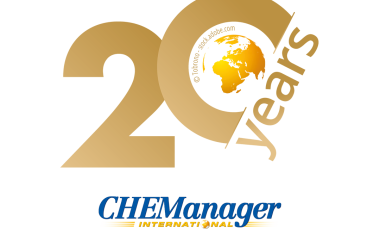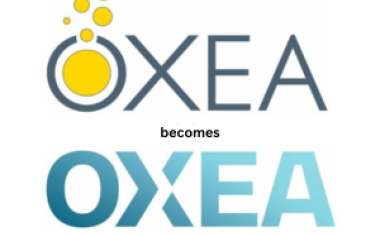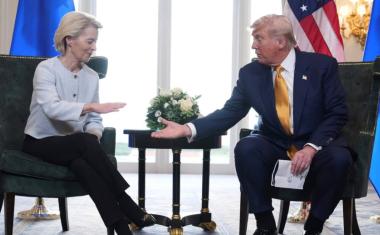With the spotlight on the rollout and the beginning of inoculation, the World Health Organization (WHO) on Dec. 31 recommended the Pfizer/BioNTech vaccine Comirnaty for emergency use worldwide, marking another first for the American-German team. This paves the way for all countries to fast-track their own regulatory approval to import and administer the shots.
UK approves Oxford /AstraZeneca vaccine
As 2021 dawned, the UK became the first county to grant emergency approval for the Oxford /AstraZeneca vaccine, followed quickly by India, where the shot will be marketed under the name Covishield. The Anglo-Swedish drugmaker said it will boost its overall production to two million doses a week by the middle of January. The British government has ordered an initial 100 million.
India also has approved another Covid-19 vaccine, made by local producer Bharat Biotech, as it begins a mass immunization drive, starting with Covishield. Bharat’s Covaxin brand – for which no efficacy data has been released – will be administered under stricter conditions. The government said it is in the public interest to have more options. The British product is being made locally by the Serum Institute of India (SII). The world’s biggest vaccine producer has already stockpiled more than 50 million doses, even in the absence of a formal supply deal.
Novavax candidate starts Phase 3 trial
US biotech Novavax announced on Dec. 28 that it has begun a large late-stage study of its experimental Covid vaccine in the US in Mexico. The trial had been delayed twice due to problems in scaling up the manufacturing process. It plans to enroll up to 30,000 volunteers across about 115 sites. The company, which lags other producers, has signed supply agreements with several countries and has agreed to provide 60 million doses to the UK, where it also has an ongoing Phase 3 trial.
Alongside tangible progress, there was intense discussion over the holidays about the timetables for shots, handling of the fragile ingredients and the general availability of the vaccine in various countries. Frustration over a perceived inadequate supply led to public criticism of national leaders, while government authorities criticized vaccine developers for moving too slowly.

Moderna vaccine set for EU approval
In the EU, the European Commission has faced ire for not ordering more doses of the Pfizer-BioNTech vaccine already approved by the European Medicines Agency (EMA) or the Moderna candidate set to be approved on Jan. 6, rather than signing up for vaccines that have not yet been approved. In this context, German health minister Jens Spahn urged the EMA to quickly approve the AstraZeneca candidate, even though efficacy concerns persist.
To bridge the European supply gap, Germany-based BioNTech has now asked the EMA to allow doctors to draw a sixth dose from vials, if possible, rather than the five currently approved. The producer said the amount remaining in the vials can vary according to the type of needles and syringes used, adding that the vials are filled with more vaccine than necessary to ensure at least five doses can be drawn efficiently.
With a sixth dose, hundreds of thousands of additional doses could become available in Germany alone during the first quarter, BioNTech CEO Ugur Sahin suggested in an interview with news magazine Der Spiegel. Regulators in the US, Switzerland and the UK already allow up to six doses, he said.
Also facing criticism for a perceived shortfall, the US government has ordered an additional 100 million doses of the Pfizer-BioNTech vaccine to arrive in the second quarter of 2021, as well as 200 million additional doses from Moderna. The AstraZeneca/Oxford candidate has not yet been approved by the US Food and Drug Administration (FDA).
Should vaccine delivery be spaced or mixed?
Another solution for improving vaccine supply that has emerged in the UK is also the subject of a debate, with the pros and cons fiercely defended by the respective sides. The government of prime minister Boris Johnson, trying to get a grip on distribution problems, has presented a “mix and match” inoculation strategy, under which recipients could be given a shot of whichever vaccine is available in the second round, independent of which they received first.
A related strategy also propagated in the UK is to extend the interval between the two shots to allow more people to receive a first dose. Many experts have been critical of this approach, in particular vaccine makers, who have noted that the length of the interval between shots was an important criterion in the efficacy calculation during clinical trials.
Oxford University scientists have meanwhile blamed the UK for not building up an adequate manufacturing structure. A similar blame game is being played in the EU, where national governments, including Germany’s, have suggested that the developers license their technology to larger drugmakers, who could churn out additional doses of vaccine.
Vaccine makers point out, however, that the mRNA technology in particular requires highly specialized knowhow that cannot simply be outsourced to others manufacturers, even to another biopharma company. While BioNTech can fall back on Pfizer’s capacity for its US vaccine manufacture, it continues to stress that it is looking for new CDMO partners in Europe to secure a larger supply of individual vaccine ingredients.
Author: Dede Williams, Freelance Journalist













